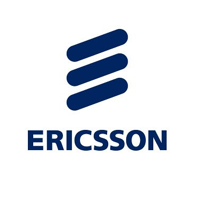-
5G - 5G Spectrum for Local Industrial Networks – Ericsson White Paper
-
-

5G Spectrum Industrial Networks – Ericsson White Paper
Leveraging communications service provider assets and expertise
Many industries are looking at 5G as the backbone of the Fourth Industrial Revolution. It is a golden opportunity for communications service providers (CSPs) to create and capture new market spaces by driving innovation, efficiency, and growth across various industries.
A key factor influencing the uptake of wireless solutions is the question of how to handle spectrum for industrial purposes, since reliable connectivity demands licensed spectrum. Some countries provide spectrum dedicated for industrial use, whereas others do not. The intention of this paper is not to discuss the pros and cons of such spectrum strategies, but rather to focus on industries with local radio coverage needs. It tries to show that whether licensed spectrum is set aside for industries or not, CSPs are in the prime position to optimally address these industrial connectivity needs with powerful 5G networks and business models focused on industries. For regulators intending to implement licensed spectrum dedicated to industrial use, this paper aims to describe how this should best be done using simple principles and the well-defined legislation already available in most countries across the world.
Cellular solutions for industries — huge business potential
There is a huge opportunity for CSPs to address industrial connectivity needs with 3GPP-based cellular technologies. The opportunity encompasses a range of industries, including diverse segments with
diverse needs, such as those in the manufacturing, mining, port, energy and utilities, automotive and transport, public safety, media and entertainment, healthcare, and education industries, among others. Many enterprises in these industries are already CSP customers, with the total CSP share of the global addressable 5G-enabled market across these industries projected to be around USD 700 billion by 2030, according to the 2030 Market Compass Report.One of the objectives of this paper is to address concerns regarding spectrum access for those industries that are early adopters of 3GPP cellular technologies for limited areas — in particular, industries such as manufacturing, mining, and ports as well as those with the opportunity to use cellular technologies in their operations but which have not seen wide adoption yet, such as the airport, oil and gas, warehousing, hospital, education, and construction industries.
Taking manufacturing, with its estimated 1 million factories (with more than 100 employees), as an example, typical business cases revolve around controlling the production process, improving material management, improving safety, and introducing new tools. Typical revenue increases come from increased throughput and quality (2–3 percent), while typical cost savings stem from improved capital efficiency (5–10 percent) and decreased manufacturing costs (4–8 percent). Additionally, ABI Research has shown that manufacturers can expect to see a tenfold increase in their returns on investment (ROIs) for cellular Industry 4.0 solutions, while warehouse owners can expect a staggering fourteen-fold increase in ROI.
5G Spectrum Industrial Networks
©Ericsson 2020

-
Related Reports
-
 Read more
Read moreEricsson Mobility Report June 2020 – Update
Ericsson Mobility Report June 2020 – Update. The first months of 2020 saw the spread of a novel coronavirus around…
-
-
 Read more
Read moreEvolution from LTE to 5G – May 2020
Evolution from LTE to 5G LTE is a global success, with nearly 5 billion subscriptions and connecting over 55% of mobile users worldwide and it is the fastest developing mobile system technology ever. LTE is specified by 3GPP as a single global standard for paired and unpaired spectrum users. The vast majority of the standard is the same for FDD and TDD. LTE has evolved through various 3GPP technology releases covering the introduction of LTE-Advanced and then LTE-Advanced Pro that have significantly improved the capabilities of LTE networks. From 3GPP Release 15 onwards, the community… -
-
 Read more
Read morePrivate LTE & 5G Networks Report: February 2020
Private LTE & 5G Networks Report: February 2020 The deployment of private mobile networks has emerged as an important market. In fact so important that the market could – according to Arthur D Little – be worth as much as €60–70 billion by 2025. This implies rapidly growing adoption among the 14–15 million potential sites for private LTE networks identified by Nokia last year in an interview with EnterpriseIotInsights. The demand for private LTE (and increasingly, 5G) networks has been driven by the spiralling data requirements of modern business and government entities. Organisations of all… -
